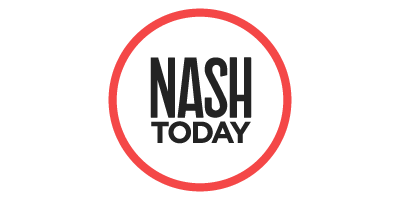The wheels are turning to implement a plan aimed at improving Nashville’s public transit by way of new tax revenue.
As of early August, Nashville’s transit referendum has cleared its final hurdle — approval from the Davidson County Election Commission — to appear on the Nov. 5 ballot. With transit the talk of the town for the next three months, we’re sharing a few FAQs to help you steer through the plan.
What will I see on the ballot?
The referendum is a countywide vote on whether to establish dedicated funding for transportation projects in Mayor Freddie O’Connell’s “Choose How You Move” plan. According to the ballot language, the plan will be funded by “federal grants, revenues from transportation system fares, and a sales tax surcharge of 0.5%.”
From the ballot language: “The tax surcharge will end once all debt issued for the transit improvement program has been paid and [Metro Council] determines by resolution that the revenues from the tax surcharges are no longer needed for operation of the program.”
Give me the plan highlights.
The following is a snapshot of what’s included in “Choose How You Move.” If you’re feeling up for it, read the full 94-page plan for more details.
- 86 miles of sidewalk improvements
- 54 miles of upgraded corridors
- 24/7 WeGo Transit service
- 17 new park and ride facilities
- 35 miles of upgraded and new bicycle facilities
- 600 intersections will receive traffic signals upgrades
Can I see projects coming to my neighborhood?
See planned improvements down to the street level with the help of interactive maps. Navigate to your neighborhood or council district, and from there, click on the bubbles and highlighted routes to learn more about individual projects.
Will it be on the same ballot as the presidential election?
Yes. The transportation referendum will appear on the same ballot as the presidential candidates and other races. Early voting will begin on Oct. 16 and run through Oct. 31.
Can I see the ballot language in full?
“Passage of this measure adopted by Ordinance BL2024-427, allows the Metropolitan Government to complete the entire priority sidewalk network when combined with annual capital spending, provide significantly expanded 24-hour public transportation service 365 days a year including frequent service on major routes, add more neighborhood transit centers, improve safety for all roadway users, and upgrade and modernize nearly two-thirds of the city’s signalized intersections.
This program’s capital cost is estimated to have a current cost of $3,096,000,000. Once construction is complete, the estimated value of recurring annual operating and maintenance costs is approximately $111,000,000. The Metropolitan Transit Authority (WeGo), Nashville Department of Transportation and Multimodal Infrastructure, Metro Planning Department, and Mayor’s Office, in partnership with other Metro departments, will undertake implementation of the program.
This program will be funded by federal grants, revenues from transportation system fares, debt, and a sales tax surcharge of 0.5%. The tax surcharge will end once all debt issued for the transit improvement program has been paid and the Metropolitan Council determines by resolution that the revenues from the tax surcharges are no longer needed for operation of the program.
FOR or AGAINST”
Does this feel familiar?
You might remember a similar transit referendum in 2018, which was ultimately rejected with 64% of voters opposing the proposal. Following the vote, critics suggested that officials moved too quickly and didn’t allow for enough public input, ultimately dooming the $5.4 billion plan.
The 2018 Let’s Move Nashville proposal focused largely on light rails and called for less than the suggested funding recommended for bus service.











